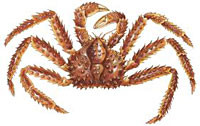
Oncorhynchus spp. and Salmo salar
The global demand for salmon – that most excellent of table fish – has led to a considerably- sized salmon farming industry in both the northern and southern hemispheres, with large numbers of fish being reared in net-pens. Although the Pacific waters have five endemic salmon species, many salmon farmers prefer the Atlantic salmon, as it is easier to culture.
Inevitably, farmed Atlantic salmon escape from the pens, often in large numbers. This has the effect of having an alien species competing with native species for spawning and rearing habitat...
Read More








Social Profiles